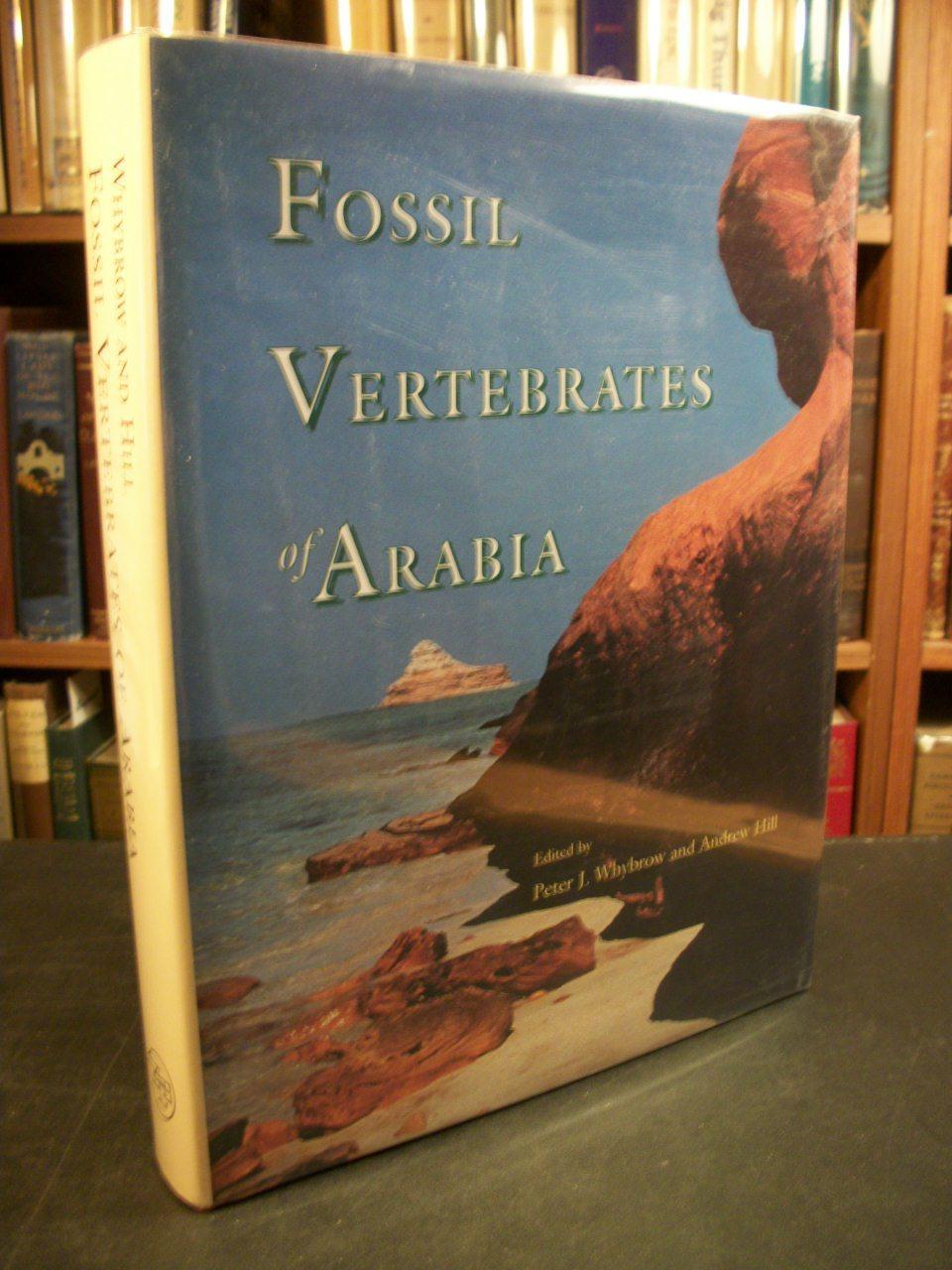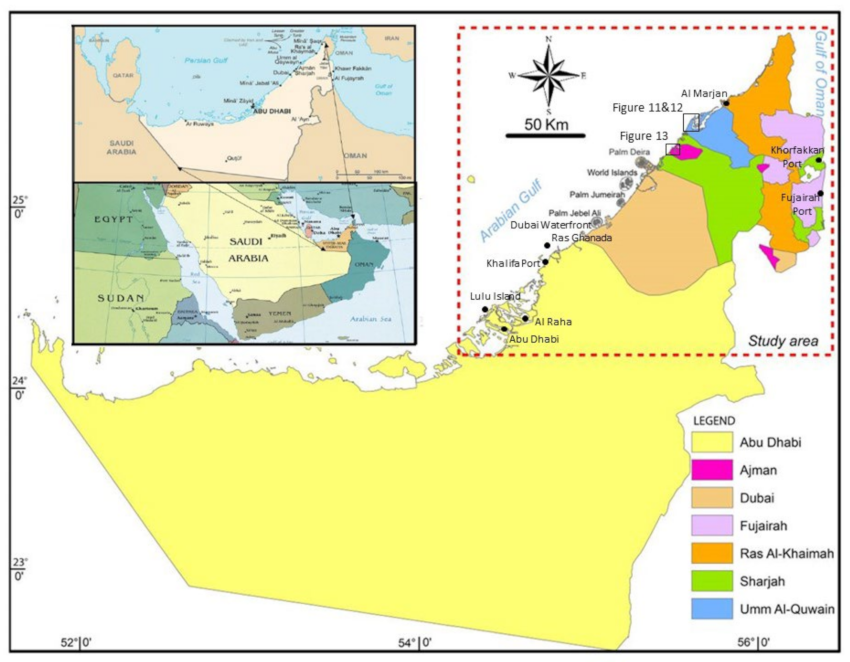
Geological map of UAE (modified from British Geological Survey and UAE
The tectonic map of Abu Dhabi distinguishes three principal tectonic cycles: (1) Precambrian cycles are interpreted using the magnetic data, as there are no wells that penetrated the basement in.
2 Simplified map of Holocene facies and subaerial surface geology of
Combining the fields of geology, physics, chemistry, and biology, an earth scientist explores how Earth's natural systems work today, how they operated in the recent and ancient past, and how we expect they may behave in the future. Earth Science is relevant to us all, every day. Welcome to the Department of Earth Sciences at Khalifa University

General sedimentary facies along the coastal areas of Abu Dhabi Emirate
SUMMARY The sabkha of Abu Dhabi was formed during the past 7,000 years by wind erosion of pre-existing dunes and progradation of subaqueous, intertidal, and supratidal carbonate sediments. Marine transgression began in this area about 7,000 years ago and reached an apparent high about 1 m above its present level somewhat prior to 4,000 years B.P. Since then progradation of intertidal and.

Zeugen in the Abu Dhabi sabkha and the eroded last remnants of aeolian
From the early 1980s until today, the Abu Dhabi government has always been a supportive partner to this paleontological research and continues to document, research, and protect important fossil sites that are part of the late Miocene Baynunah Formation, as well as curate the important collection of fossil specimens resulting from this work.

Mecanoo’s geologyinspired Natural History Museum Abu Dhabi takes shape
The Abu Dhabi emirate has an onshore area of 77,700 square kilometres, compared with about 84,000 sq km for the whole of the UAE, plus some 30,000 sq km of offshore area on the Arabian side of the Persian Gulf. The emirate is located on a broadly subsiding shelf wherein sedimentation is very thick.

Fossil Vertebrates of Arabia With Emphasis on the Late Miocene Faunas
First Online: 08 June 2022 167 Accesses 4 Citations Part of the Vertebrate Paleobiology and Paleoanthropology book series (VERT) Abstract The Baynunah Formation (8-6 Ma) outcrops along the western coast of Abu Dhabi Emirate and has produced the only known late Miocene continental vertebrate fauna from the Arabian Peninsula.

Abu dhabi’s desert hires stock photography and images Alamy
Groundwater in eastern Abu Dhabi in the United Arab Emirates is an important resource that is widely used for irrigation and domestic supplies in rural areas. The U.S. Geological Survey and the Environment Agency—Abu Dhabi cooperated on an investigation to integrate existing hydrogeologic information and to answer questions about regional.

Mecanoo’s geologyinspired Natural History Museum Abu Dhabi takes shape
Oil- and gas exploration in the Emirate of Abu Dhabi began in 1936, and at the present day, it is one of the most prolific hydrocarbons-producing areas in the Arabian Gulf (Alsharhan, 1989; Geng et al., 2022b) (Fig. 1).An improved understanding of the tectonic history of the United Arab Emirates (UAE) and the region's stratigraphic characteristics will help with future hydrocarbon exploration.

Classic 'cottage cheese' anhydrite forms immediately below the surface
As UAE is a major oil producing country, its general petroleum geology has been extensively studied by a number of authors including Alsharhan, 1989, Alsharhan and Kendall, 1995, Alsharhan and Nairn, 1997 and Glennie (2010). However, the petroleum systems in UAE have not been systematically documented in the public domain.

Fossil Vertebrates of Arabia With Emphasis on the Late Miocene Faunas
Thus the geology of the Emirates is one of extremes. One the one hand are the thick sequences of limestones almost identical to the modern coastal deposits that have had a peaceful existence for the past 500 million years and more.. (Liz Ashton was the Group's Geology Recorder until her departure from Abu Dhabi last May. She was responsible.

Geographical position of the four oilfields in the Abu Dhabi region
The Permain to Holocene sediments of the United Arab Emirates consist mainly of epeiric shelf carbonates, associated with minor clastics and evaporites, reflecting major cycles of transgression.

Fossil dunes in Abu dhabi stock photo. Image of geology 178818048
They are characterised by a mix of evaporite minerals (predominantly gypsum, anhydrite and halite) and carbonates, and hence are generally restricted to hot arid climates (Abu Dhabi and Qatar sabkhas straddle the Tropic of Cancer).

Monday Geology Picture(s) Kayaking Amongst the Mangroves in Abu Dhabi
The Gachsaran depocenter was located in onshore Abu Dhabi. During the late Miocene and into the Pliocene, the Alpine Orogeny which uplifted the Alps and the Himalayas affected the region, uplifting the Omani and Zagros Mountains and driving significant erosion.

Land Free FullText Land in Water The Study of Land Reclamation
Most of the detailed research on the geology and geotechnics of Abu Dhabi has been conducted onshore. The first detailed studies were produced in the 1970's, largely on the basis of aerial.

Draw Together, Abu Dhabi, Orthodox, Geology, Rural, Analysis, Temple
Geology: United Arab Emirates This simplified geological map shows the distribution of sediments and rocks occurring at the land surface and in the near-shore shallow marine environments of the United Arab Emirates. The units are broadly divided into two groups: autochthonous units and allochthonous units.

Abu dhabi stock image. Image of dune, geology, dunes 66869769
Most of the detailed research on the geology and geotechnics of Abu Dhabi has been conducted onshore. The first detailed studies were produced in the 1970s, largely on the basis of aerial photograph interpretation coupled with limited field mapping. Subsequent detailed geological maps and memoirs were produced by the British Geological Survey.